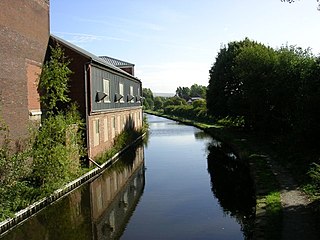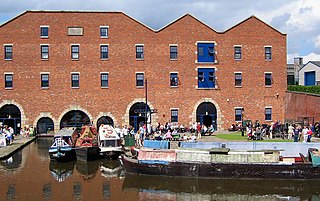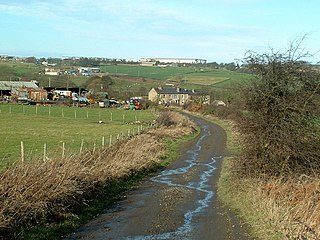Related Research Articles

The Great Famine, also known within Ireland as the Great Hunger or simply the Famine and outside Ireland as the Irish Potato Famine, was a period of starvation and disease in Ireland lasting from 1845 to 1852 that constituted a historical social crisis and subsequently had a major impact on Irish society and history as a whole. The most severely affected areas were in the western and southern parts of Ireland—where the Irish language was dominant—and hence the period was contemporaneously known in Irish as an Drochshaol, which literally translates to "the bad life" and loosely translates to "the hard times". The worst year of the famine was 1847, which became known as "Black '47". During the Great Hunger, roughly 1 million people died and more than 1 million more fled the country, causing the country's population to fall by 20–25% between 1841 and 1871. Between 1845 and 1855, at least 2.1 million people left Ireland, primarily on packet ships but also on steamboats and barques—one of the greatest exoduses from a single island in history.

In the history of the United Kingdom and the British Empire, the Victorian era was the reign of Queen Victoria, from 20 June 1837 until her death on 22 January 1901. Slightly different definitions are sometimes used. The era followed the Georgian era and preceded the Edwardian era, and its later half overlaps with the first part of the Belle Époque era of continental Europe.

The English Poor Laws were a system of poor relief in England and Wales that developed out of the codification of late-medieval and Tudor-era laws in 1587–1598. The system continued until the modern welfare state emerged after the Second World War.

The M62 is a 107-mile-long (172 km) west–east trans-Pennine motorway in Northern England, connecting Liverpool and Hull via Manchester, Bradford, Leeds and Wakefield; 7 miles (11 km) of the route is shared with the M60 orbital motorway around Manchester. The road is part of the unsigned Euroroutes E20 and E22.

In Britain and Ireland, a workhouse was an institution where those unable to support themselves financially were offered accommodation and employment. The earliest known use of the term workhouse is from 1631, in an account by the mayor of Abingdon reporting that "we have erected wthn [sic] our borough a workhouse to set poorer people to work".

The Ashton Canal is a canal in Greater Manchester, England, linking Manchester with Ashton-under-Lyne.

Halifax is a constituency represented in the House of Commons of the UK Parliament since 2015 by Holly Lynch of the Labour Party.

The Rugby League Hall of Fame honours the leading players of the sport of rugby league. It was established by the sport's governing body in the UK, the Rugby Football League, in 1988. Players must have been retired for at least five years to be eligible; they must also have played at least ten years within the British game. Players are chosen for induction to the hall of fame by a panel consisting of sports writers, broadcasters and officials.
Castle Hill is a scheduled ancient monument in Almondbury overlooking Huddersfield in the Metropolitan Borough of Kirklees, West Yorkshire, England. The hilltop has been settled for at least 4,000 years. The scheduled monument comprises the remains of a late-Bronze Age or early Iron Age univallate hillfort with a single raised bank, a later Iron Age multivallate hillfort, a 12th-century motte-and-bailey castle, and the site of a deserted medieval village. The grade II listed Victoria Tower on the summit of Castle Hill is by far the most conspicuous landmark in Huddersfield. The hill has been a place of recreation for hundreds of years and the easily discernible remains of past occupation have made it a subject for legend, speculation and scientific study. It is located on UK Maps at grid reference SE152140.


The Andover workhouse scandal of the mid-1840s exposed serious defects in the administration of the English 'New Poor Law'. It led to significant changes in its central supervision and to increased parliamentary scrutiny. The scandal began with the revelation in August 1845 that inmates of the workhouse in Andover, Hampshire, England were driven by hunger to eat the marrow and gristle from bones which they were to crush to make fertilizer. The inmates' rations set by the local Poor Law guardians were less than the subsistence diet decreed by the central Poor Law Commission (PLC), and the master of the workhouse was diverting some of the funds, or the rations, for private gain. The guardians were loath to lose the services of the master, despite this and despite allegations of the master's drunkenness on duty and sexual abuse of female inmates. The commission eventually exercised its power to order dismissal of the master, after ordering two enquiries by an assistant-commissioner subject to a conflict of interest; the conduct of the second, more public inquiry drew criticism.

Dukinfield Junction is the name of the canal junction where the Peak Forest Canal, the Ashton Canal and the Huddersfield Narrow Canal meet near Ashton-under-Lyne, Greater Manchester, England. The area has been designated by Tameside Metropolitan Borough Council as a conservation area.

Leeds Road was a football stadium in Huddersfield, England. It operated from its construction in 1908 until the Kirklees Stadium was opened nearby for the 1994–95 season. It was the home of Huddersfield Town A.F.C. from 1908 to 1994 and was also the base for Huddersfield RLFC from 1992 to 1994.

Morley Tunnel is a railway tunnel in West Yorkshire, England, situated between Morley and Batley railway stations on the Huddersfield line. From its northern end, it extends 3,369 yards (3,081 m), passing beneath Morley town centre, to its southern end.

Nantwich Workhouse, also known as Nantwich Union Workhouse, Nantwich Union House and Nantwich Institution, is a former workhouse in Nantwich, Cheshire, England. It is located at The Barony, off Barony Road. Built in 1779–80 to accommodate up to 350 people, the institution remained in use as a workhouse until 1930.
Leigh Union workhouse, also known as the Leigh workhouse and after 1930, Atherleigh Hospital, was a workhouse built in 1850 by the Leigh Poor Law Union on Leigh Road, Atherton in the historic county of Lancashire.

Chorlton Poor Law Union was founded in January 1837 in response to the Poor Law Amendment Act 1834, also known as the New Poor Law. It was overseen by an elected board of 19 guardians representing the 12 parishes in the area it served: Ardwick, Burnage, Chorlton-upon-Medlock, Chorlton with Hardy, Didsbury, Gorton, Hulme, Levenshulme, Moss Side, Rusholme, Stretford, and Withington, all in present day south Manchester, England.

Shuttle Eye Colliery was a coal mine on the South Yorkshire Coalfield at Grange Moor between Wakefield and Huddersfield on the A642 road, in England.
Workhouse infirmaries were established in the nineteenth century in England. They developed from the Workhouse and were run under the Poor law regime.
Huddersfield power station supplied electricity to the town of Huddersfield and the wider area from 1893 to 1981. It was owned and operated by Huddersfield Corporation until the nationalisation of the electricity supply industry in 1948. The power station was redeveloped several times: including the incorporation of new plant in the 1910s, and in the 1930s to 1950s. The station was decommissioned in October 1981.
References
- ↑ Fowler, Simon (2014). The Workhouse: The People, The Places, The Life Behind Doors. South Yorkshire: Pen & Sword History. p. 129. ISBN 9781783831517.
- ↑ McNee, Alan (2015). The Cockney Who Sold the Alps: Albert Smith and the Ascent of Mont Blanc. Brighton: Victorian Secrets Limited. p. 78. ISBN 9781906469528.
- ↑ Korte, Barbara; Regard, Frédéric (2014). Narrating Poverty and Precarity in Britain. Berlin/Boston: Walter de Gruyter GmbH & Co KG. p. 94. ISBN 9783110367935.
